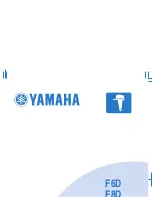
RouterBOARD 200 Series User's Manual
LEDs
User LEDs – LED1, LED2, LED3, LED4
User LEDs may be programmed at user's option. See
RouterBOARD SDK
for more details.
MiniUPS LED – LED5
LED is lit when the board is powered from MiniUPS.
Power LED – LED6
LED is on when the board is powered
CMOS Battery
The RouterBOARD can use CR1620 Lithium Coin Battery for preserving the BIOS configuration stored in
CMOS, and also for powering real-time clock (RTC) while off the utility power. This configuration and RTC
may be reset by switching JP3 to the 2-3 position shortly.
User's Guide
Assembling the Hardware
First to use the board:
●
Configure jumpers. The board should have 6 jumpers already set in some positions. The Jumper
Index chapter of this manual describes all possible jumper positions
●
Insert SoDIMM memory module. Use standard-sized PC100 or PC133 SoDIMM SDRAM modules
●
Connect boot device (optional as you may boot the RouterBOARD from network)
●
Install PCI, MiniPCI, PCMCIA cards. Note that you may not use both PCI and MiniPCI cards
simultaneously
●
Install the board in a case
●
Connect other peripherals and cables.
Note
that the IEEE Ethernet standard requires a minimum
2m long cable (6.5 foot).
You can also order an assembled system with RouterBOARD, memory module and extension cards of your
choice already installed in a case.
Powering
Power options:
●
Power jack/header:
20V to 56V DC
-20V to -56V DC (including -48V telecom power)
●
IEEE802.3af Power over Ethernet (PoE):
48V DC
RouterBOARD 200 series boards are equipped with a reliable 15W power supply that accepts a wide
range of input voltage. The board has a power jack (5.5mm outside and 2mm inside diameter, female,
pin positive plug) and a power header for input voltage of 20V to 56V DC. To use the power jack/header,
both JP4 and JP5
must
be switched to the
1-2
position.
Note
that to power the board from -48V (telecom power wires), connect GND power wire to the positive
contact of the board, and -48V wire to the negative contact. Positive contact is the center pin in the
power jack, and the nearest to the power jack square (
◘
) contact on the J12 power header (there is a
small '+' sign near it).
10




































